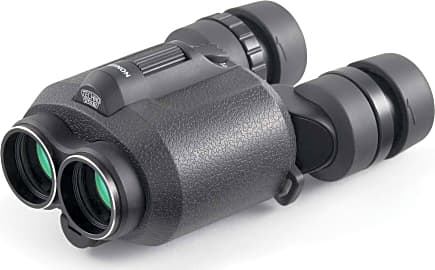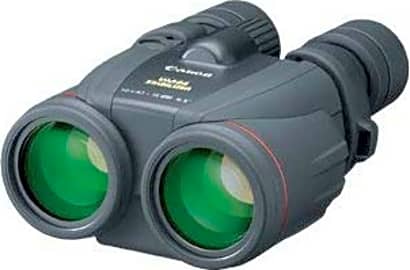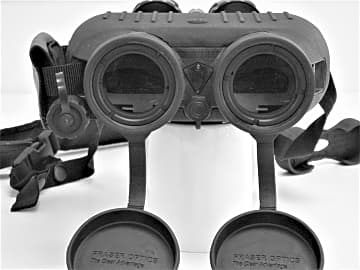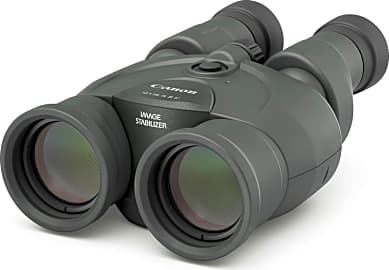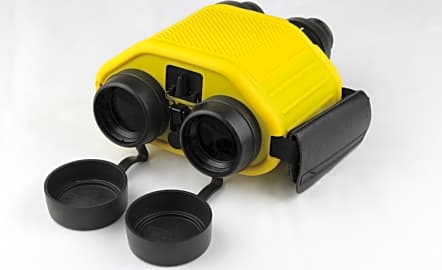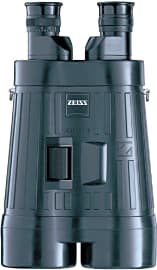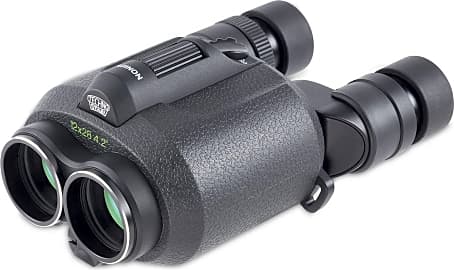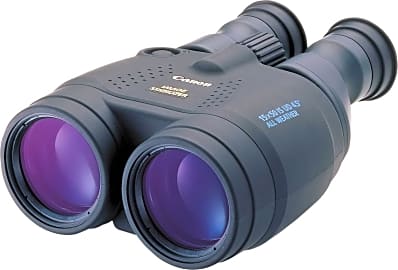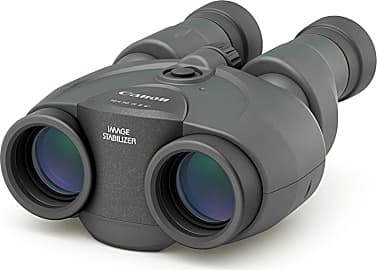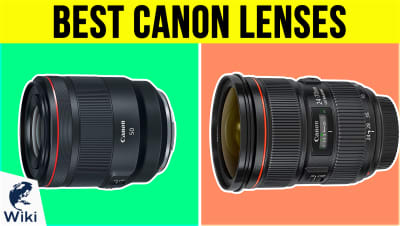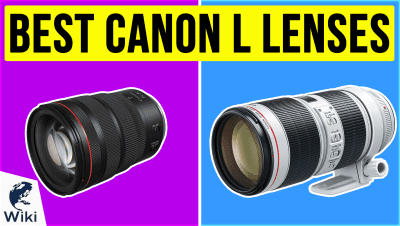The 10 Best Image Stabilized Binoculars

This wiki has been updated 36 times since it was first published in April of 2017. For those interested in taking the long view, the image stabilized binoculars on this list are definitely worth looking into. Whether for birdwatching, stargazing, or reading the tail numbers on approaching aircraft, they enhance clarity and sharpness by employing gyroscopes to counteract any vibrations caused by your hands or the environment, giving you clear and steady vision. When users buy our independently chosen editorial selections, we may earn commissions to help fund the Wiki.
Editor's Notes
November 03, 2020:
While there haven't been a ton of new developments in this category, we did see fit to add a model from Fuji from their outstanding Techno-Stabi line in the Fujinon Techno-Stabi TS 12x28. It's a smart choice for a lot of casual users who don't need things like water-resistant housings, but still want the advantages of added stabilization. And their 12x magnification will be plenty for most people in that demographic. The Canon 10x42 L IS Waterproof saw a promotion to one of our top spots, largely due to its use of L-Series glass, which, if you're familiar with Canon's camera lens lineup, will be familiar as the moniker for their top-of-the-line offerings.
We also added the ATN Binox 4K 4-16X to our special honors section, which is as much a capable night vision unit as it is a set of stabilized binoculars, and its ability to do things like zoom, record 1080p video to a micro SD card, and communicate with the company's gun sights to share ballistic info from its built-in rangefinder make it a total workhorse.
November 19, 2019:
There should be little wonder that Canon occupied so much of this list, as their camera lenses are renowned for their internal image stabilization. That technology is on full display here, with the likes of the Canon 12x36 IS III placing vari-angle lenses between the objective and the entry of their porro prisms to compensate for vibrations in more than just vertical and horizontal directions.
Fujifilm, another camera giant, has a pair of models on this list, including the outstanding Fujinon Techno-Stabi TS 1440. But, sadly, both of the Nikon models included on our previous list have been archived by the company, which is their subtle way of saying they've been discontinued. Zeiss is the only other name to cross over into the camera industry to remain on our list, and while their Carl Zeiss 20x60 offer some of the best low-light performance around, their price will always be a nearly insurmountable hurdle.
We've also updated the earlier Fraser optics model, now including both of their military-spec offerings in the Fraser Optics S250 and the Fraser Optics M25E. Both boast some of the most profound weather sealing and shockproofing that you're going to find, making them exceptional choices for anyone who knows they're going to be roughing it.
Special Honors
ATN Binox 4K These capable specs offer a slew of digital features, including night vision, video recording, and rangefinding. They can even sync with the company's scopes and relay ballistic information to help you home in on a target in the field. They offer zoomable magnification, as well, with a range running from 4-16x. atncorp.com
What Are Image Stabilized Binoculars And How Do They Work?
Image stabilized binoculars automatically compensate for unwanted hand motion, without the user having to perform any actions.
Image stabilized binoculars have very much the same function as standard hunting or astronomy binoculars. They allow users to view far away objects in much greater detail than would be possible with the naked eye alone. The notable difference between image-stabilized binoculars and traditional models is the integrated image stabilization technology. This is extremely helpful when using high-powered binoculars, as the greater the zoom capabilities of a pair of binoculars, the more prone they are to image shaking. Any time the magnification of an image is greater than 10 times on a pair of binoculars or a camera, even the slightest of hand movements can create a disorienting amount of unsteadiness.
Image stabilized binoculars automatically compensate for unwanted hand motion, without the user having to perform any actions. They can reduce tilt and panning, which minimizes the blurring and jumping of the viewed images. There are two main categories of image stabilization: active and passive. Active image stabilization systems use electronic sensors to detect any movement of the binoculars, and adjust some part of the viewing components to correct for it. Depending on the type of active image stabilization used, it may shift the position of one of the lenses or adjust the angle of the prism. Passive image stabilization systems don't detect motion in the binoculars, but rather produce a stabilizing effect on the binoculars at all times. This may be through the use of an internal gyroscope that minimizes movement of the body, or by disengaging the prisms from the housing so that they are less effected by binocular movement.
Anybody who is purchasing a high-powered pair of binoculars can benefit from choosing a pair with image stabilization technology. They are an especially smart choice for someone who plans on using their binoculars from a non-stationary surface or a moving vehicle, such as a floating deck, boat, or plane. Image stabilized binoculars are also useful for astronomers viewing celestial objects, as lens-shake is often amplified by variations in the atmosphere.
The Magic Of Lenses And Prisms
The combination of lenses and prisms inside of binoculars is what makes them capable of magnifying images and displaying them in the correct orientation. Lenses are simply curved pieces of glass. They can affect the direction of light rays, and the way they are curved dictates which direction they bend the light rays. Convex lenses, which are the kind used in binoculars, are curved like a dome, meaning the outside is slightly thinner than the center. When light passes through a convex lens, it bends in towards the center. When a lens is thinner in the middle and thicker on the outside, it is called a concave lens. Instead of bending light in towards the center, concave lenses send it shooting outwards.
They also allow for the creation of compact and lightweight binoculars that are easier to transport.
Every pair of binoculars has two convex lenses placed one in front of the other. The one nearest the object being viewed is called the objective lens. The one nearest the user's eye is called the eyepiece. The objective lens gathers rays of light from the distant object and brings them together in to a focused image just behind the lens. The eyepiece is responsible for magnifying that focused image.
Unfortunately, something else also happens to light rays when they pass through a convex lens, they cross over. This results in an image that is flipped upside down. To correct this, binoculars contain a pair of prisms. Each prism rotates the image 90 degrees, effectively rotating the image a full 180 degrees and making it right side up again. Binoculars use either roof or Porro prisms. Porro prisms, while slightly less durable and compact then roof prisms, tend to produce a brighter image. On the other hand, roof prisms tend to create a more vivid image. They also allow for the creation of compact and lightweight binoculars that are easier to transport.
The Birth Of The Binoculars
Binoculars are essentially just two telescopes mounted side-by-side, so in order to understand the history of binoculars, we must look to the history of telescopes. It is hard to tell exactly who first invented the telescope. Jan Lippershey, a Dutch eyeglass maker, filed for the first telescope patent in 1608. But another Dutchman and eyeglass maker by the name of Zacharias Jansen, who happened to live in the same town as Lippershey, also created a telescope at roughly the same time. Adding to the confusion, a third Dutchman, Jacob Metius, filed for a telescope patent just weeks after Lippershey. Ultimately, the government of the Netherlands denied both patents due to the confusion over who invented the device first. They also cited the ease in which the telescope could be reproduced as making it hard to patent. Almost as if in testament to their statement, Galileo managed to create a very similar device of his own, having only heard of the Dutch version, and never having seen it.
While the telescope was a major technological triumph, it had a very significant drawback.
While the telescope was a major technological triumph, it had a very significant drawback. It did not allow for any depth perception. Galileo and Lippershey both quickly realized this and set to work creating a twin telescope that allowed users to view far away objects with both eyes. This eventually led to the creation of the binoculars.
The earliest binoculars were capable of creating a three-dimensional image, but couldn't magnify objects very much. They also had a very narrow field of view. Galileo worked to combat this by combining an objective lens with a concave eyepiece. Another inventor by the name of Johannes Kepler worked to combat this by combining an objective lens with a convex eyepiece. Ultimately, Kepler's design was more successful and binoculars are still based on it today.


